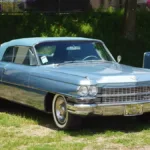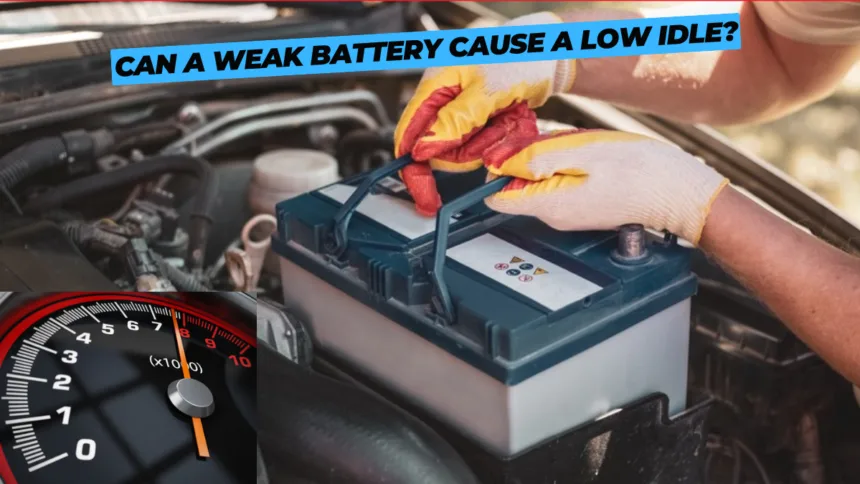In the world of car mechanics, a car’s battery and how its engine performs are quite an entangled mess. Among many questions people pop up often among car enthusiasts as well as everyday drivers, one such question that is asked is: “Can a weak battery cause low idle?
In this article, we will walk through the details on how a weak battery may affect the car’s idle, symptoms to observe, and what to do in troubleshooting and fixing these issues. Buckle up-we are going to learn the nuts and bolts of automotive health!
Understanding Idle Speed and Its Importance
What Is Idle Speed?
Idle speed is revolutions per minute at which an engine runs not under load. One can say that it is how fast your engine will run while waiting for a green light in an intersection. Most modern gasoline engines generally run between 600 to 1,200 RPM at idle.
Why Is Idle Speed Important?
A stable idle speed is crucial for several reasons:
- Smooth Operation: A consistent idle helps ensure your vehicle runs smoothly and responds well when you press the accelerator.
- Fuel Efficiency: An optimal idle speed means less fuel consumption when the vehicle is not in motion.
- Engine Health: Erratic idling can lead to long-term damage to engine components, affecting the longevity of your vehicle.
The Role of the Battery in Engine Performance

How the Battery Works
Your car’s battery happens to be the heart of the electrical system. It serves to provide that initial surge of electricity needed to get the engine started and to power those electrical devices whenever the engine is turned off. Once the engine has started, it’s then up to the alternator to supply the energy and to charge the battery.
What Happens When the Battery Weakens?
A weak battery can lead to various issues in your vehicle, including:
- Difficulty Starting: The most obvious symptom of a weak battery is trouble starting the car. You may hear clicking sounds when turning the key, indicating insufficient power to engage the starter motor.
- Electrical Problems: A weak battery may not provide enough power for electrical components, leading to dim lights, malfunctioning radio, and erratic dashboard readings.
- Idle Speed Fluctuations: If your battery struggles to supply adequate power, it can affect the performance of the engine management system, potentially causing a low or erratic idle.
Can a Weak Battery Cause Low Idle?
The Direct Connection
So, can a weak battery really cause low idle? The answer is a resounding yes! Here’s how:
- Voltage Fluctuations: A weak battery might not supply a steady voltage to the engine control unit (ECU), which manages the air-fuel mixture and idle speed. When the ECU receives inconsistent power, it can result in poor performance, including low idle.
- Inadequate Sensor Functionality: Many sensors in modern vehicles rely on a stable power supply from the battery. If the battery is weak, sensors like the throttle position sensor or mass airflow sensor may not function correctly, leading to an unstable idle.
- ECU Adjustments: The ECU constantly makes adjustments based on sensor readings. If those readings are skewed due to low battery voltage, the adjustments could lead to a lower than normal idle speed.
Symptoms of a Weak Battery Affecting Idle
Recognizing the symptoms is key to diagnosing the problem early on. Here’s what to watch out for:
- Low Idle RPM: The most direct symptom is the idle RPM dropping below the standard range.
- Fluctuating RPM: A weak battery may cause the RPM to jump erratically while idling.
- Engine Stalling: If the battery cannot maintain sufficient power, it might lead to the engine stalling unexpectedly.
- Check Engine Light: A lit check engine light could indicate multiple issues, including battery-related problems affecting the idle.
Troubleshooting Low Idle Due to Weak Battery

Step 1: Check the Battery Health
Before anything else, it’s essential to check the health of your battery. Here’s how:
- Visual Inspection: Look for signs of corrosion on battery terminals and cables. Clean any corrosion you find.
- Test Voltage: Use a multimeter to check the voltage. A fully charged battery should read around 12.6 volts. Anything significantly lower indicates a weak battery.
Step 2: Test the Alternator
The alternator charges the battery while the engine is running. If it’s not functioning properly, your battery may weaken over time. Here’s how to test it:
- Voltage Check: With the engine running, the voltage should read between 13.7 to 14.7 volts. If it’s lower, your alternator might be failing.
Step 3: Inspect the Idle Control System
If the battery and alternator are in good shape, consider looking at the Idle Air Control Valve (IAC) and throttle body, as these components play a significant role in maintaining idle speed.
- Clean the IAC Valve: If it’s dirty, it can hinder proper airflow, leading to low idle.
- Throttle Body Inspection: Ensure it’s clean and functioning correctly.
Step 4: Professional Diagnosis
If all else fails, it may be time to consult a professional mechanic. They can run diagnostic tests to pinpoint the exact issue affecting your idle speed.
Preventative Measures for Battery and Idle Health
Routine Maintenance Tips
Keeping your battery and engine in optimal condition can prevent low idle issues before they even start:
- Regular Battery Checks: Test your battery at least twice a year, especially before winter.
- Clean Terminals: Regularly clean the battery terminals to prevent corrosion.
- Check the Alternator: Have the alternator checked during routine maintenance to ensure it’s charging the battery properly.
Upgrade When Necessary
If your battery is consistently weak, it might be time for a replacement. Opt for a battery with a high cold-cranking amp (CCA) rating, which is especially important in colder climates.
Conclusion
Bottom line: Weak battery can easily be a cause for idling low. The car’s battery is one of the most complex relationships between the car and the engine. You can be proactively careful about looking after the health of your vehicle. Remember, routine maintenance and on-time checks may save you from a lot of headaches down the road!
This would definitely be much better to work on your car dead than to have it stall you and your car be idling weakly.
FAQs
1. Can I drive with a weak battery?
Yes, but it’s risky. A weak battery can lead to stalling and electrical issues, making your drive unpredictable.
2. How do I know if my battery needs replacement?
Look for signs like difficulty starting, dim lights, or a voltage reading below 12.4 volts.
3. What causes a battery to weaken?
Age, extreme temperatures, and a faulty alternator can contribute to a weak battery.
4. How often should I check my car battery?
It’s wise to check your battery at least twice a year and before long trips.
5. Can low idle damage my engine?
Yes, consistently low idle can lead to premature wear on engine components and increased fuel consumption.
Also Read : What is an EGR Cooler? Benefits & Functionality







